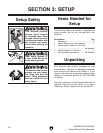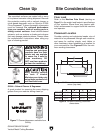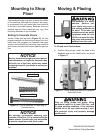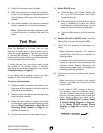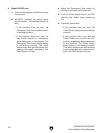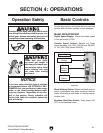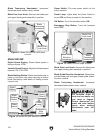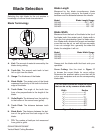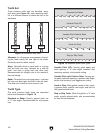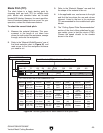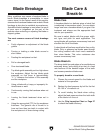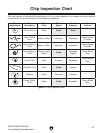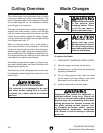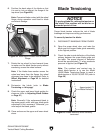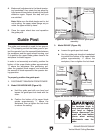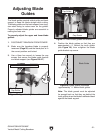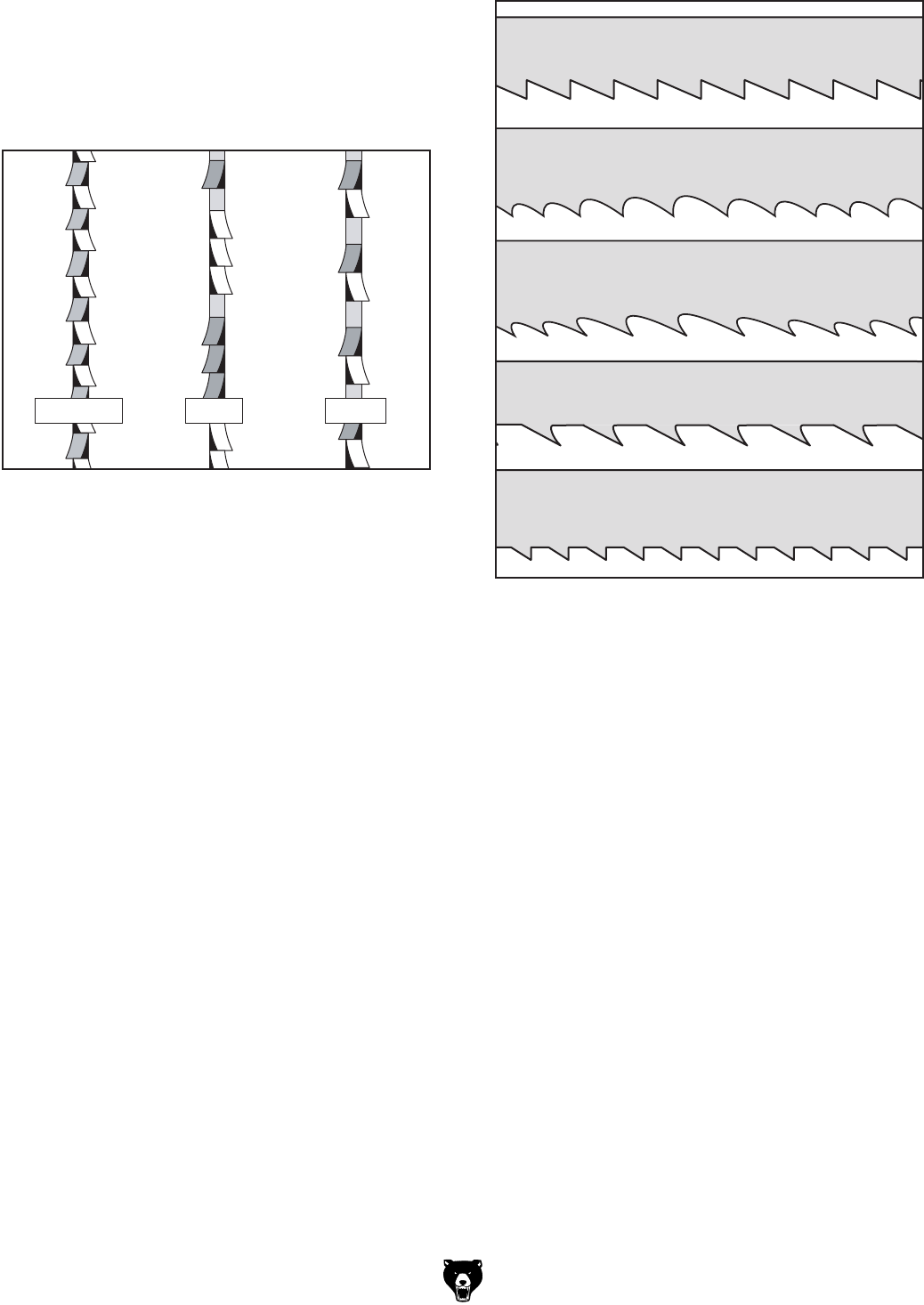
-24-
G8144Z/G8145Z/G8146Z
Vertical Metal Cutting Bandsaw
Tooth Set
Three common tooth sets are standard, wavy,
and raker (see Figure 18), each removing mate
-
rial in a different manner to make the kerf in the
workpiece.
Alternate: An all-purpose arrangement of bend
-
ing the teeth evenly left and right of the blade.
Generally used for milder metals.
Wavy: Generally three or more teeth in a group
that are bent one way, followed by a non-set
tooth, and then a group bent the other way.
Recommended for straight cuts in thin metals or
thin-wall tubing.
Raker:
Three teeth in a recurring group—one bent
left, next one bent right, and then a non-set tooth.
The raker set is ideal for most contour cuts.
Tooth Type
The most common tooth types are described
below and illustrated in Figure
19.
Standard or Raker: Equally spaced teeth set
a "0" rake angle. Recommended for all purpose
use.
Figure 19. Bandsaw blade tooth types.
Variable Pitch (VP): Varying gullet depth and
tooth spacing, a "0" rake angle, excellent chip
removing capacity, and smooth cutting.
Variable Pitch with Positive Rake: Varying gul
-
let depth and tooth spacing, a positive rake angle,
better chip formation, and aggressive cutting.
Hook or Claw: Wide gullets (round or flat), equal
-
ly spaced teeth, positive rake angle, and fast cut
with good surface finish.
Skip or Skip Tooth: Wide, flat gullets, a "0" rake
angle, equally spaced teeth, and recommended
for non-ferrous materials.
Figure 18. Bandsaw tooth sets.
Alternate Wavy Raker



